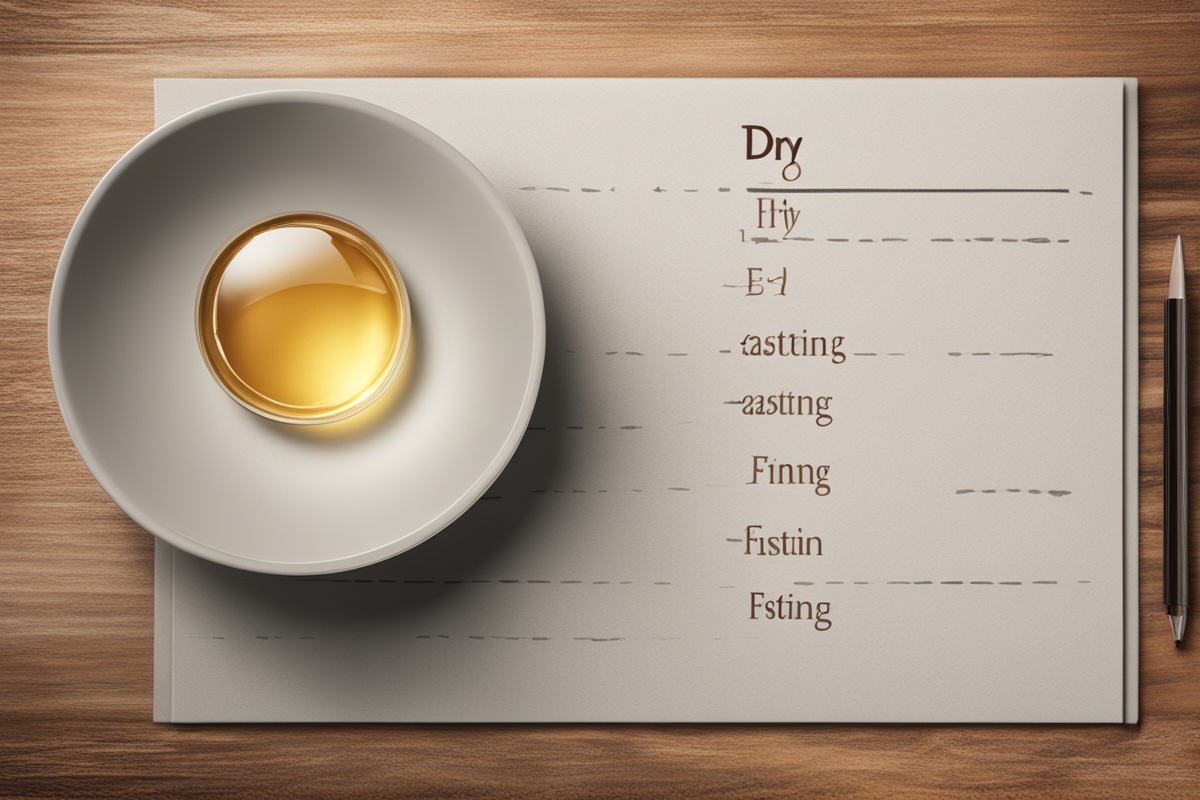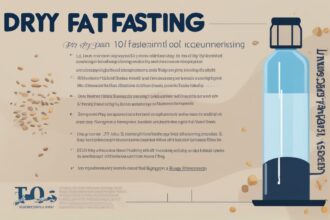Have you ever heard of dry fasting? If you’re exploring the world of fasting for health, weight loss, or spiritual growth, this unique practice might have piqued your curiosity. Unlike water fasting, where you abstain from food but stay hydrated, dry fasting takes things a step further by eliminating both food and water for a set period. It’s an intense approach that’s been practiced for centuries in various cultures and religions, but it’s also surrounded by controversy. In this post, we’ll unpack what dry fasting is, dive into its potential benefits and risks with scientific backing, and share practical tips to help you decide if it’s right for you. Let’s explore this fascinating method together!
What Is Dry Fasting?
Dry fasting, sometimes called absolute fasting, is a practice where you refrain from consuming any food or liquids, including water, for a specific duration. This can range from a few hours to several days, depending on the individual’s goals and experience level. Historically, dry fasting has roots in religious and spiritual traditions, such as Ramadan in Islam, where participants abstain from food and drink from sunrise to sunset. Today, it’s gaining attention in wellness circles for its purported health benefits, like enhanced detoxification and cellular repair. However, it’s crucial to understand that this is an extreme form of fasting and not suitable for everyone.
The Science Behind Dry Fasting: How Does It Work?
When you engage in dry fasting, your body undergoes significant physiological changes. Without food or water, it shifts into a survival mode, relying on stored energy reserves like glycogen and fat for fuel. Some researchers suggest that dry fasting may accelerate autophagy, the body’s process of cleaning out damaged cells and regenerating new ones, even more than water fasting. A 2019 study published in the journal Nutrients highlighted that fasting, in general, triggers ketosis—a state where the body burns fat for energy—potentially amplified during dry fasting due to dehydration stress. However, the lack of hydration also means your body must recycle internal water from fat metabolism, which can be taxing on organs like the kidneys. While the science is promising, research specific to dry fasting is still limited, so proceed with caution.
Potential Benefits of Dry Fasting
Advocates of dry fasting claim it offers unique advantages over other fasting methods. While some benefits are anecdotal, others are supported by emerging research on fasting in general. Here are a few potential perks that have people buzzing about this practice:
- Enhanced Detoxification: Proponents believe dry fasting forces the body to eliminate toxins more efficiently by relying on internal resources.
- Improved Mental Clarity: Many report heightened focus during fasting, possibly due to ketosis and reduced digestive workload.
- Weight Loss: The rapid depletion of glycogen and fat stores can lead to quick weight loss, though much of it may be water weight.
- Cellular Repair: Some studies suggest fasting boosts autophagy, which could be intensified during dry fasting.
- Spiritual Connection: For many, abstaining from food and water fosters a deeper sense of mindfulness and spiritual awareness.
Risks and Challenges of Dry Fasting
While the benefits sound enticing, dry fasting isn’t without serious risks. Dehydration is the most obvious concern, as the body requires water for nearly every function, from regulating temperature to flushing out waste. Prolonged dry fasting can lead to symptoms like dizziness, fatigue, headaches, and even more severe issues like kidney damage or electrolyte imbalances. It’s also worth noting that there’s a lack of long-term studies on dry fasting specifically, so the full scope of its effects remains unclear. If you have pre-existing health conditions like diabetes or heart issues, this practice could be downright dangerous. Always consult a healthcare professional before attempting any form of extreme fasting.
How to Practice Dry Fasting Safely
If you’re intrigued by dry fasting benefits and want to give it a try, safety must be your top priority. This isn’t a casual diet trend—it’s a serious undertaking that requires preparation and mindfulness. Here are some actionable tips to help you approach dry fasting responsibly:
- Start Small: If you’re new to fasting, begin with a short dry fast of 12–16 hours, ideally overnight, to test your body’s response.
- Hydrate Beforehand: Drink plenty of water in the days leading up to your fast to ensure your body is well-hydrated going in.
- Break the Fast Gently: Reintroduce water slowly with small sips, followed by light, hydrating foods like broth or fruit.
- Listen to Your Body: Stop immediately if you feel faint, nauseous, or unwell—pushing through isn’t worth the risk.
Additionally, avoid dry fasting for more than 24–48 hours unless under medical supervision. It’s also wise to pair this practice with other fasting methods like intermittent fasting or water fasting to build tolerance over time. Remember, preparation and moderation are key to minimizing risks while exploring dry fasting techniques.
Who Should Avoid Dry Fasting?
While dry fasting may appeal to those seeking a challenge or health boost, it’s not for everyone. Certain groups should steer clear due to the heightened risks involved. If you fall into any of the following categories, consider alternative fasting practices or consult a doctor before proceeding. This includes pregnant or breastfeeding women, individuals with chronic illnesses, children or teenagers, and anyone with a history of eating disorders. Even if you’re generally healthy, dry fasting requires careful consideration of your physical and mental state. It’s not a one-size-fits-all solution, and prioritizing your well-being over trends is always the smartest choice.
In conclusion, dry fasting is a powerful yet controversial practice that offers potential benefits like detoxification, weight loss, and mental clarity, but it comes with significant risks due to dehydration and stress on the body. While historical and cultural contexts give it credibility, the science is still catching up, and caution is non-negotiable. If you’re considering trying dry fasting, start small, prepare thoroughly, and always listen to your body’s signals. For those new to fasting, exploring gentler methods like intermittent or water fasting might be a safer entry point. Ultimately, health is a personal journey—whether dry fasting fits into yours depends on your goals, lifestyle, and medical advice. Have you tried dry fasting, or are you curious to learn more? Drop your thoughts or questions below; I’d love to hear from you!






